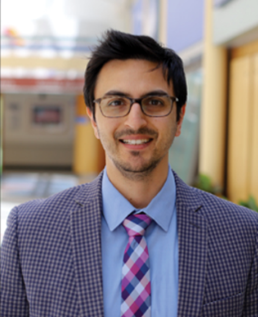A Fellow’s Path to Invention and Entrepreneurship: Q&A With Tim A. Fischell, MD, FACC

Tim A. Fischell, MD, FACC, is a cardiologist in Kalamazoo, Michigan, and is the program director for interventional cardiology fellowship at Ascension Borgess Hospital/Michigan State University. Aside from being a well-regarded cardiologist, he is also an entrepreneur, with over 100 patents registered in his name. Fischell has invented multiple medical devices and founded several companies.
I have an idea for a new device. How can I start the process?
You first need to see if someone else has worked on or is working on this idea. You must understand prior art (intellectual property/prior patents) and look to see if your idea is novel. You also must estimate market size and need, acknowledge engineering and biological challenges (is it easy to build?), then decide if this idea is worth chasing.
How do I go about conducting a background search?
Start with the United States Patent and Trademark Office (USPTO) website and search for related keywords to see if this has been done before. Then conduct a literature search to evaluate how big the problem is – never estimate that you will capture 100% of the market – then build a business plan.
How do I build a business plan and protect my rights?
If you are affiliated with an academic institution, you should check with the tech transfer office and be familiar with their intellectual property policy. Usually, those institutions help you with all the necessary steps if they adopt your idea. If you are on your own, you have many choices. You could 1) file a patent and license it; 2) file a patent, build prototypes and license it; or 3) file a patent, build it, raise capital and make a real company.
What is a patent?
A patent is a document that is designed to preserve your rights to an invention and by virtue benefiting from its utilization, whether you're in the United States, Europe, Australia or Asia. If you have an invention that might meet a global market need then you need to protect it with a patent, even if you don't know whether it may be worth the time and investment necessary to bring it to market.
How do I file a patent?
First, hire an experienced patent attorney. Filing a patent now follows a first-to-file system; the first inventor to file an application (not to invent), gets the patent. There are four main types of patents:
- Provisional patent: Basic disclosure to USPTO about your invention. It is a one-year application and cheaper than a regular patent. If you fail to file the full patent application within a year, then your idea becomes public knowledge, and anyone can use it.
- Patent application: This is the full patent. It is more complex to write and costs more money. It might get rejected multiple times. Once issued, then you have the right to the invention for 20 years.
- CIP application: Continuation in part. Extension of the original patent application and expansion of specifications and claims. Same patent life as original.
- Foreign Filing – PCT: PCT application is provisional and covers ~ 140 countries. It typically lasts 30 months. It must be followed by a full patent application in individual countries/ regions, which can be very expensive.
What happens next?
You will need to find an engineering team to help design, build and test the device. Start with prototype testing, including basic proof of principal, and try to test this in simple ex-vivo modules. Then proceed to animal testing, followed by clinical testing.
Can you elaborate more on raising capital?
Short of writing your own patent, all the steps above require funding. In some cases, pre-market approval (PMA) of a complex device could cost up to $50-100 million. You can start by funding the early proof-of-principle testing and early patent work by yourself (budget of $10,000-50,000). The next level involves building a viable prototype, early animal testing, and filing a full patent which may cost up to $250,000 to $1 million. The later stages get harder as you will need to raise upwards of $20-80 million dollars over five to eight years. At this stage, you hope a large company sees the potential in your device and invests.
Any final words of wisdom?
- Don't waste time developing technologies that are too complex or infringes prior patents.
- Don't waste time trying to find early venture capital funding. Best to self-fund or "angel-fund" from relatives and friends in the early stages.
- Do not disclose your ideas to others without a signed non-disclosure agreement.

This article was authored by Adnan (Alex) Kassier, MD, a FIT at Ascension Borgess Hospital/Michigan State University. Twitter: @akassier
This content was developed independently from the content developed for ACC.org. This content was not reviewed by the American College of Cardiology (ACC) for medical accuracy and the content is provided on an "as is" basis. Inclusion on ACC.org does not constitute a guarantee or endorsement by the ACC and ACC makes no warranty that the content is accurate, complete or error-free. The content is not a substitute for personalized medical advice and is not intended to be used as the sole basis for making individualized medical or health-related decisions. Statements or opinions expressed in this content reflect the views of the authors and do not reflect the official policy of ACC.
